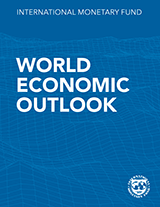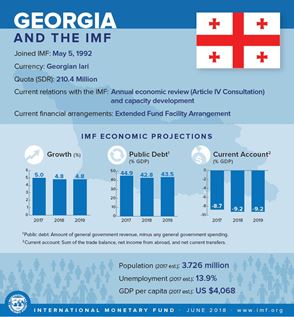Imf Annual External Sector Report
annual external report sectorThe 2016 External Sector Reportprepared by IMF staff and completed on June 30 2016 for the Executive Boards consideration on July 18 2016. 2017 External Sector Report.

The External Sector Report produced annually since 2012 is a key part of the IMFs surveillance.

Imf annual external sector report. The 2016 External Sector ReportIndividual Economy Assessmentsprepared by IMF staff and completed on June 30 2016 for the Executive Boards consideration on July 18 2016. 1 These reports rely on a comprehensive framework for determining desired levels of balances by country and understanding the policies and market forces that give rise to any undesired deviations. The IMFs 2020 External Sector Report finds that overall current account deficits and surpluses narrowed modestly in 2019 to just under 3 percent of world GDP.
The IMFs annual report on currencies the External Sector Report showed that continued weakness in trade coupled with massive fiscal expansion was projected in many countries to shrink both. The Executive Board of the International Monetary Fund IMF concluded the Article IV consultation 1 with the Republic of Poland on February 3 2021. 2019 External Sector Report.
Produced since 2012 the IMFs annual External Sector Report analyzes global external developments and provides multilaterally consistent assessments of external positions including current accounts real exchange rates external balance sheets capital flows and international reserves of the worlds largest economies representing over 90 percent of global GDP. Every year since 2012 the International Monetary Fund IMF has released an External Sector Report ESR on the global patterns of trade balances and exchange rates. The following document has been released and is included in this package.
The Acting Chairs Summing Up on the 2018 External Sector Report KEY POINTS Overall global current account surpluses and deficits remained broadly unchanged at about 3¼ percent of world GDP in 2017 with growing concentration in advanced economies. The ESR is prepared by the IMF staff and has benefited from comments and suggestions by Executive Directors following their discussion of the report on July 24 2020. External assessments are arrived at by integrating multilateral and country-specific perspectives while ensuring individual economy assessments add up to a coherent multilaterally consistent view.
The External Sector Report ESR analyzes global external developments and provides multilaterally consistent assessments of external positions of the worlds largest economies representing over 90 percent of global GDP. The External Sector Report ESR is a survey by the IMF staff published once a year in the summer. Free DownloadUse the free Adobe Acrobat Reader to view this PDF file.
This report along with the companion Individual Economy Assessments integrates analysis from the IMFs bilateral and multilateral. Panama has a well-developed macroeconomic statistical system and the government recognizes the importance of good statistics for policy and investment decisions. Gita Gopinath IMF Chief Economist and Director of the IMFs Research Department.
External Sector Report Annual Subscription The External Sector Report presents a methodologically consistent assessment of the exchange rates current accounts reserves capital flows and external balance sheets of the worlds largest economies. The IMFs multilateral approach suggests that about 3545 percent of overall current account surpluses and deficits were deemed excessive in 2018. Following a long period of strong growth the pandemic triggered a recession in 2020 though the estimated contraction of 34.
The IMFs External Sector Report - an annual assessment of currencies and external surpluses and deficits of major economies - showed that current account surpluses remained centred in the euro. Panamas statistical system is well established by a legal framework that generally provides the necessary authority for the collection and compilation of statistics. 2016 EXTERNAL SECTOR REPORT IMF staff regularly produces papers covering multilateral issues and cross country analyses.
The IMFs multilateral approach suggests that about 40 percent of overall current account deficits and surpluses were excessive in 2019. 2018 EXTERNAL SECTOR REPORT The IMFs Seventh External Sector Report presents a multilaterally consistent assessment of the largest economies external sector positions and policies. Global current account imbalances were broadly unchanged in 2016 with minor shifts adding to the reconfiguration under way since 2013.
The following document has been released and is included in this package. Produced since 2012 the IMFs annual External Sector Report analyzes global external developments and provides multilaterally consistent assessments of external positions including current accounts real exchange. July 28 2017.
The Dynamics of External Adjustment. The International Monetary Fund IMF released on August 4 its ninth annual External Sector Report where current account imbalances and asset-liability stocks of 30 systemically large economies. The annual report by the IMF focuses on presenting a multilaterally consistent assessment of the largest economies external positions and policies.
IMF staff regularly produces papers covering multilateral issues and cross-country analysis. In a simplified way it looks at countries aggregate current account status commonly mis-referred to as a trade surplus or deficit. This Report on the Observance of Standards and Codes ROSC is a.
The latest ESR improves the statistical model and reaches sensible policy conclusions on trade imbalances in the largest economies. IMF Executive Board 2020 Article IV Consultation with the Republic of Poland.